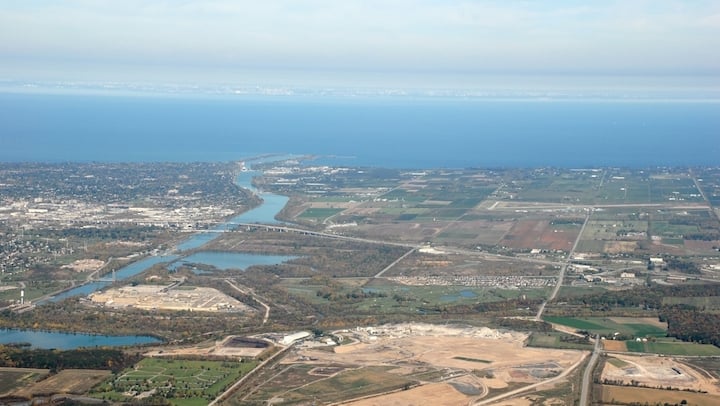Estimated reading time: 3 minutes

The Region of Niagara is comprised of twelve municipalities in Southern Ontario. Each municipality represents a unique combination of agricultural, commercial, industrial, multi-residential, and hospitality opportunities. Over the next few months we will be presenting a market snapshot of significant areas within the Niagara Region.
Today, we will be examining the City of St. Catharines, the largest city in the Niagara Region. Centrally located within Niagara, the city provides easy access to Toronto and western New York. The City of St. Catharines is committed to fostering a positive business environment, encouraging business retention and expanding the economic prosperity of the city.
A strategic advangtage
Located in the heart of Niagara, the City of St. Catharines sits between two economic zones: the GTA and the U.S. market. This offers a key advantage to businesses within the city. The city is well positioned and enjoys a robust transportation network including:
- The QEW and 406 corridor.
- Major railways connecting Niagara with ports in Montreal and the U.S. Midwest.
- Close proximity to four airports and their subsequent distribution centres: Toronto International Airport, Hamilton International Airport, Buffalo-Niagara International Airport, and Niagara Falls International Airport.
- The Welland Canal, which connects Lake Ontario and Lake Erie. St. Catharines provides extensive docking and heavy lift facilities within the city.
A strong economic base and population
The City of St. Catharines enjoys a strong, diverse economic base, which is a combination of industrial and commercial with an established agricultural base. Although St. Catharines was originally known as “the manufacturing city”, it has now shifted focus to the service industry. As the largest city in the Niagara Region, the development in St. Catharines represents a large portion of economic development in the region. The city provides a large pool of skilled professionals and houses almost a third of Niagara’s population.
Public and private economic development
More than $1.6 billion has been invested in St. Catharines, both public and private. Public investments have included recreation, culture, and traditional infrastructure while private investments have included manufacturing, commercial, and residential development. The city provides competitive business tax rates with similar sized municipalities and has a wide selection of available land zoned for industrial, with plenty of modern office and retail available as well.
Significant developments
The City of St. Catharines has seen advancements in development and redevelopment, especially in its downtown core. St. Catharines' downtown core was recongized as a key urban growth centre in Ontario's Plan for Growth and was the only area in Niagara identified. Downtown St. Catharines is considered a focal point within the Greater Golden Horseshore for investment. Learn more about significant developments in St. Catharines:
- The New Performing Arts Centre, the Meridian Centre, and the Marilyn I. Walker School of Fine and Performing Arts.
- Residential and commercial expansion downtown (The Leonard Hotel, the Hotel Dieu redevelopment, and additional parking facilities).
Connecting with an appraiser to determine the value
Looking to invest in St. Catharines or looking to finance a property? Connect with Niagara real estate appraiser, Owen Hughes, today to discover the value of your property in the Niagara Region.




